Reprint: the five periods of urban revitalization since WWII
I have been busy, sick, etc., and everything I want to write will take a lot of time, so there hasn't been any "new" content production over the course of the week.
Because I read so much, and remember at least some of it (I was a little embarrassed the other week when a transportation researcher/professor recommended an item to me and connected me to the people who did it, and those people informed me that I wrote about the study a couple years ago and thought the work had some flaws and I had no recollection of reading it or writing the two pieces...) it's hard sometimes to get excited about "change" when it's cyclical or is hitting critical mass, but is the culmination of a long slog, but because others didn't recognize the various events and efforts over that period, it's new.
In that vein, I'll reprint reprint this entry, which is worth doing, because urban revitalization existed before say, the last 5 years.
For the most part, I believe that the text holds true today (in December 2011) for those center cities on the East and West Coasts that are holding their own, relatively speaking, despite the 2008 real estate crash.
Froma Harrop of the Providence Journal has a column from the last week, "Congratulations Seattleites, you live in a cool city," about what's driving this, young people's desire to live in interesting places. (I am a proponent of face-to-face connection and agglomeration economies, so I believe her thesis.)
She jokes somewhat in the piece that young people are going to live in these places, even if there aren't jobs there (which is the joke behind the IFC series "Portlandia"). This is fueled by having a decent supply of relatively low cost housing which supports shared housing, etc.
I am not part of that segment of the housing market anymore, but wonder how much of it still remains in DC?
Actually, DC lacks this kind of housing for the most part, as the housing market has been upscaled. What it means is at least in younger demographics, more house and apartment sharing.
--------------------
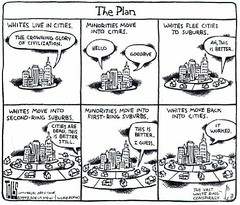
Entry: Tuesday, September 19, 2006
The other thing that I thought about in terms of Mallach's talk and my own learning, some recent planning history and theory I've been reading, my reaction to a particular part of a presentation at a preservation fundraising training held last Saturday, and my continued incredulity about the failure of current residents to understand the antecedents of city livability, is phases of urban revitalization since just after World War II.
Outmigration from center cities was pretty much halted by the Depression and World War II, which diverted most resources to the war effort. But the process of outmigration started decades previous to the Depression, mostly enabled by railroads and then streetcars, but made relatively simple by the car, especially as a reliable road and service network developed.
After the War, the pent up demand of the American consumer was released. And rather than work to rehabilitate the cities, which experienced a good 16 years of disinvestment and it showed--many residents chose to leave the city and move into greener pastures.
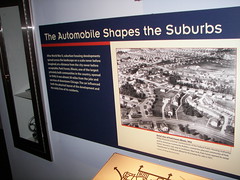
The five phases of urban revitalization:
1. Urban renewal and a focus on accommodating the car. For centuries cities were designed around walking. The horse, carriage, and stagecoach were the most advanced technology for getting around. Cars changed everything. The ability to conquer distance changed everything, and scale and use of space changed dramatically.
The construction of the Interstate highway system should be considered part of this movement although it was more about enabling suburban development. Highways for the most part raped the center cities, which have not been able to recover still.
People moved out of the city, seeking the "American Dream" and a bit of lawn, but still worked in the city. Suburban development was mostly focused on retail and housing. As urban neighborhoods were cleared for "renewal" and "renewed" other city neighborhoods were destabilized by receiving the dispossessed which challenged neighborhood social networks.
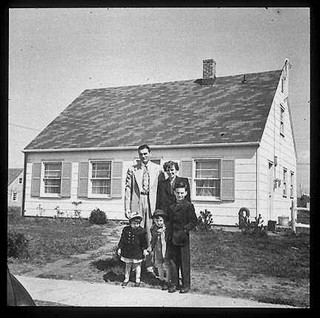
From the 1960s, until the last decade, most urban sociologists believed that cities were born, grew, declined, and died. There was no sense within academia that center cities could revive.
2. The historic preservation movement in the early 1960s. People, attracted by the historic building stock in many urban neighborhoods, moved to the city. Center cities had changed significantly in terms of population as a result of white flight. The preservation movement was two pronged, mostly augured by new residents, usually white, but also with a current resident thread, in some African-American neighborhoods.
The preservation movement was also an outgrowth of the anti-freeway movement in places like Greenwich Village in NYC, the French Quarter in New Orleans, Washington, DC and other places. The National Historic Preservation Act was first passed in 1966, and it called for protection of designated neighborhoods vis-a-vis federal undertakings, in particular, freeway projects.
3. The "Community Development" refashioning of the urban renewal philosophy. Community Development Corporations were created to step in and act where the market refused. And especially after the period of urban unrest (riots, rebellion, civil disturbances--choose your term) peaking after the assasination of Dr. Martin Luther King Jr., cities emptied out of both middle and upper income residents, as well as businesses, especially in those areas scarred by unrest.
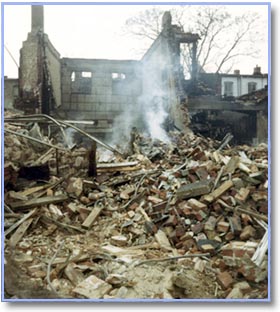
Most CDCs built housing. For the most part, CDCs saw the solution to the urban problem in terms of the automobile-centric suburban development paradigm, and most projects aggressively suburbanized the city through the construction of strip shopping centers, shopping malls, and housing oriented to the car, driveways and parking, rather than attached, more dense housing (for the most part). Rather than enhancing population through adding residents, many CDC and post-riot renewal projects ended up reducing the number of middle income residents, and focused on serving lower-income residents.
In my opinion, in most places, the millions of dollars invested in CDCs from the mid-1970s to today have had little impact in terms of positive urban revitalization, because they adopted a paradigm antithetical to the competitive advantages of the city. I don't think they were mendacious, but I bet it's the rare CDC director or board member who has ever read Jane Jacobs.
4. Continued in-migration by people attracted to urban living, in part due to overt or covert strictures on choice or appeal of where to live. (I need better language for this.) Immigrants, artists, and other people with alternative lifestyles found urban living to be affordable and/or attractive for a variety of reasons, and continued to move into urban areas, despite recent experiences with civil unrest, national and regional trends and polices that continued to favor suburban development (including federal mortgage policies), increased municipal dysfunction and decline in the provision of services.
These populations built on the efforts started by the preservationists. In certain places with extremely low real estate demand, immigrants had tremendous impact. Improvement cumulated over generations, as financial capacity developed with assimilation and the achievement of critical mass, assisted by continued immigration by members of the extended family.
5. Renewed interest in urban living by younger and older people. Spurred in part by tv shows such as Friends and Seinfeld, as well as a desire for a lifestyle not centered upon the automobile. Some say there is actually a "bookend" effect with seniors attracted to city living as well because of the ability to get around without a car (driving abilities often degrade with age), transit, and the amenities.

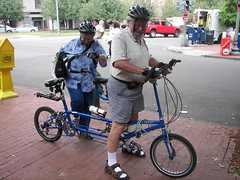
One aspect of this phase is an interest in historic residential building stock is paired with demand for lower-maintenance living in multiunit apartment and condominium buildings. But a big part of the attraction are walkable neighborhoods anchored by commercial districts, cafes, coffee shops, etc.

There are many more issues that could be discussed, but then this would become a 10,000 word essay. Displacement, programs to support housing options for those of lesser means, strengthening independent retail, transit, dealing with new residents possessing a suburban, car-centric paradigm about land use, how to add infill housing and commercial development in ways that don't overwhelm extant neighborhoods, the quality of municipal services, especially public safety, and public education, the issue of change in power relations and contested spaces, are just a few that come to mind.
But one concern that initiated this piece to begin with is the failure of many new residents to understand that they wouldn't have attractive urban neighborhoods to live in if it weren't for historic preservationists and their efforts over the many decades when people thought they were crazy for remaining committed to the city.
New residents ought to be the first to support preservation, if they want to remain in a livable city, one that faces tremendous pressures to redevelop into a more dense pattern, because of the profits that can be reaped by doing so.
But this could come at a great cost: the loss of the very characteristics that make the city livable to begin with.
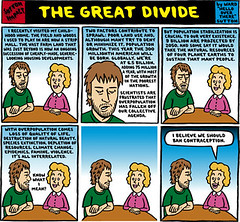
Labels: asset-based community development, economic development, housing policy, urban design/placemaking, urban revitalization
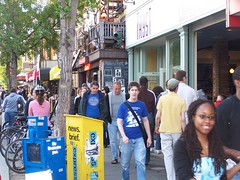



26 Comments:
http://www.washingtonpost.com/business/capitalbusiness/chinese-american-business-owners-roiled-by-historical-preservation-effort/2013/04/13/5c64043e-a2bc-11e2-9c03-6952ff305f35_story.html
while much credit is due historic preservation efforts- on emust also consider it's downside and that many who run the HP societies are extremely conservative and not accepting of change or of new people moving into the city at all. I am continually astounded by the outright hostility towrds 8th street's positive changes and towards the new streetcars- most of the older people on CH are extremely vehement and are dead set against anything at all that could potentiall impact their parking rights and Richard you mean well but do not seem to grasp this hostility at all for some reason. Just last Thursday I encountered a neighbor who is aghast at 8th street and sees it as a disaster- and she hates the idea of streetcars . This woman lives but a block from the metro and has multiple cars and does not appear to use transit at all. Again- if these folks were truly enamored of HP that would be one thing- but they seek to discourage businesses or to dump unwarranted expenses onto property owners [ read the Chinatown article] the same was true with the Barney Circle rehjection of HP. Few want to deal with th eolder people who just want to dictate and not give an inch at all. This really needs to change as it is seriously threatening historic preservation and turning into parking preservation.
Not sure, Richard. As a framework for thinking about why "new" residents don't appreciate "Old" ones I think it is helpful.
As any sort of model, seems like it leaves more out. (drugs. crime. race. money.) In particular if you can't describe 1980s style urbanism that is pretty weak. And let's be honest, the U in Yuppie came from Urban. It wasn't all outsider culture back in the day. I remember people making fun of urban gentrifiers in Cleveland in 1986 with their roasted tomatoes and all that jazz. (great lakes brewery was a product of that)
And I'll also push back again the car infrastructure -- particular the early side -- was so bad. What was so destructive to cities was urban renewal and blowing up old buildings for no reason.
http://www.theatlanticcities.com/jobs-and-economy/2013/04/el-paso-ushers-its-downtown-renewal-demolition-weekend/5281/
That being said, lets go back to the original question of why hipsters hate historical preservation. And I'd say a huge part of the sub-culture is the pioneer ethos (grow your own eggs!) which doesn't want to admit previous inhabitants were once there. Or to be more specific, that previous inhabitants are the ones who made gentrification possible.
Garance's article on swagger jacking a a year ago is a good example. No awareness of U st being destroyed by metro, the reeves center, the CDC, and drug market (as well as Republic Gardens being closed)
However, like any good framework, made me appreciate a visit to Philly this weekend to see Rittenhouse Square and the Northern Liberties.
I think that the urban pioneer phase, while triggered in part by urban renewal (and freeways) was also a little bit pre-existing. But at the same time, it was a "phase" that lasted 40+ years, and took that long to reach critical mass.
cf. http://urbanplacesandspaces.blogspot.com/2011/07/revitalization-in-stages-anacostia.html
2. wrt crime, yes it was key and decline of municipal institutions generally, but I think that was more a dependent variable, a function of outmigration and loss of population, which created a vacuum and a greater povertization of the city so to speak, where crime could thrive.
one of the things I do not approve of at all is directed and irrational historic preservation guidelines- such as the CHRS banning window awnings- this was clearly directed at poor or middle class non-lawyer elite whites and blacks who could not afford air condtioning- and awnings ARE HISTORIC and should be brought back. This clearly shows the classist and racist side of the HP movement. Other examples can be had as well. Again- these people might have done some good in the 60's but they dropped the ball by the late 60's and allowed the SW-SE freeway to be built- and they say by and allowed crappy " renovation" like the H St Auto Zone to go in w/o any comment- and when the hipsters moved in there suddenly CHRS wants to halt the new streetcars. These people are really asswholes and Rcihard- they are not on your side- or OUR side for that matter !!!!
There's nothing in that article from Cap. Business that makes me think HP is a bad thing. The building owners want to monetize and sell off and make a pile from demolition of the buildings.
That might be acceptable. But there is no question it has deleterious effects.
FWIW, there were Germans and Greeks in "Chinatown" before the Chinese migrated to that particular area.
2. Still, it would have been better to have dealt with this a long time ago. Then again, HP, given it is a mostly volunteer effort, is all about triage.
triage or retribution against those certain elements do not favor?
how is saving buildings retribution against the Chinese?
If you've ever worked to "save a building" (for me, I have victories like with Uline Arena and Newton Theater and at least one defeat, two frame buildings on the 800 block of 7th St. NE) then you understand what I mean about "triage".
Without a systematic survey, which DC hasn't done, all you're left is with triage.
and just because you do systematic survey, like Chicago did, doesn't mean that buildings are automatically preserved.
cf. http://web.archive.org/web/20041001104843/http://www.chicagotribune.com/features/custom/landmarks/chi-030113landmarks1,0,6683913,print.story?coll=chi-homepagebiz-utl
Richard, you posted a link a few weeks ago on HP and the Shaw area (student thesis). While I disagree with most of the account, the HP aspect seems true with Chinatown as well (people are more eager to preserve buildngs than communities)
(and yes, a good building stays arond for 100 years, while a community might last a generation or two)
RE: urban pioneers. Absolutely, it is 40+ year project. And the question isn't hipsters or taking the city back or anything bigger than just making the place you live more livable and beautiful.
I care more about buildings than people myself. The buildings last generations and need advocates. People regenerate. Although post-Katrina and New Orleans made me a lot more conscious of preserving culture and people. But I have long since reached compassion fatigue on the people end for a long time.
Richard I am with you on trying to save these buildings- and I actually have family heritage involved in at least one of them- but my beef with these activists is that they com ein and unilaterally IMPOSE a historic district on people- often without anyone's permission or involvment- this is WRONG and bullheaded to say the very least. I have a big problem with the way historic district leaders- none of whom are elected in this city- muscle into areas and start dictating to people. The whole Barney Circle thing left a lot of bad tastes in peoples mouths- mine included. I am with these Chinese people as far as this goes- and they are absolutely right- we have personal property laws and customs in this country- it is not supposed to be a dictatorship. However- I am with YOU in that I see these folks as having little or not alliegance to DC and having basically moved to the suburbs and now they just see DC as holdin gup their plans. A line needs to be drawn- but egregious disrespect for those of us who have been here thru all of these riots and changes is not the way to go- and the Chinese stayed !! We need to be able to preserve these buildings w/o imposing a dictatorial type scheme as has been done on Capitol Hill. And as far as retribution goes- the CHRS is famous for retribution against individual property owners and has been egaged in this kind of activity now for many decades.
You can't create a historic district without an approval of a majority of the people voting. That's the law--well, it's the requirement for being on the National Register, and DC uses the same requirements.
In fact, it's why it's almost impossible to create historic districts now, and why I write so much about the need to be much better at promotion and marketing of the benefits of historic preservation. And in engaging new members and proponents.
Why shouldn't Barney Circle be designated?
2. WRT lawsuits etc. where we disagree is I see people f*ing up their houses all the time, where it is the default position. You don't see things the same way. But for me, because the chances are greater than 50/50 that people will do bad, I am willing to put in the preservation protections.
3. If there is a problem with the review process, and I would aver there is, that should be corrected.
In fact, I will be writing about the DC Pres. Plan later in the week, after I read it, and before the 4/23 hearing, and I will put in comments on that element and how to fix it.
... I forgot to mention that most of the big historic districts in DC were created when votes weren't required.
BTW- this is an excellent posting despite the debate. Another thing- look to Philly- Philadelphia Magic Gardens was established on South Street BEFORE the historic people made it into a histroic district and I doubt that any of them would have approved of Zagar's constructions. Historic people in general are often HOSTILE to artists doing things to their structures like this- but then again- who the F^&$ are they to dictate what is right to someone who has clearly brought commerce and tourism to that area- an area that had been slated for demolition by Edmund Bacon- our great American Urban Planner ???
historic preservation people need to take a basic civics course in American democracy- and they need to learn to not dictate to people or to knock on their doors at midnight threatening to people and propert owners. This seems to be a universal problem with historic presrvationists. I am all for it and believe me I respect the intentions- I do not like lawyers muscling in on these affairs and the nasty posturing I see these people aoften take/acquire
Barney Circle is an area that has been colonized by hispters and young folks who want to be able to exercise their property rights- if you are going to spend bokoo bucks on a mortgage you should have some say on whether or not you can add or subtract to your property. Plus- where do you draw the line as what is " historic"? I find this argurment very dangerous- we cannot declare the entire city historic- if that happens DC will NEVER be allowed to grow at all and all business will be stifled and shut down. We do not want these people breathing down our necks in every neighborhood. I totally understand the Barney Circle people and they have every right to fight against the CHRS terrorizing them as they have done.
again- I think that I am on your side in this- I also do not want to see these valuable buildings in Chinatown destroyed- but we also cannot just arbitrarily go into an area and tell people what to do either- and sensitivity must be exercised . Another thing- I think perhaps you need to step back and take a look at some of these people in these societies- they are not your firneds Richard- they are basically head and shoulder against just about everything you advocate on this blog- they hate young people moving into DC, they hate the new businesses, they do not want parking impacted or taken away around metro stations- they hate streetcars, they are against density and in general- depsite most of them being "democrats" - they are all super conservative and not willing to change at all.
I recognize the problems with the groups more than most. And while I write what I write, I do seriously wonder whether or not most of the groups are capable of change. The jury's out.
again- you do a very good service even if I hassle you on some points sometimes- but I also have to take a little issue with the South Street situation- the artists were there far before the historic preservation people. And of course now- the issue in Philly is not saving any significant 1700's structures anymore- and more than a few have come down in the past 5 years or so in Philly- but the big concern is that god-awful atrocious looking Roundhouse abortion that these morons think is of critical architectural importance. Soon we will have maniacs running around plastering every Brutalist monstrosity with a " historic" designation. Again- what is really "historic" and not just " histrionic" ???
haven't opened the shaw thesis yet. And it reflects Kathy Smith's thoughts of that particular time I think. Kathy has since decamped the city after many decades. I wonder what she'd say now. (Then again, I ate at Ben's the other day...)
what is the shaw thesis?
plasterer sutton
I'm reminded of Jesus' words to the persnickety Pharisees: "You have strained out the gnat & gulped down the camel."
plasterer sutton
I Interesting post. I have been wondering about this issue,so thanks for posting.
plasterer sutton
I enjoyed reading your articles. This is truly a great read for me.have bookmarked it and I am looking forward to reading new articles.RPS Plastering Service base in Sutton with works carried out with in the M25 and surrounding areas.
plasterer sutton
Hi – It’s good to read such interesting stuff on the Internet as I have been able to discover here. I agree with much of what is written here and I’ll be coming back to this website again. Thanks again for posting such great reading material!!RPS Plastering Service base in Sutton with works carried out with in the M25 and surrounding areas
Thank you from management goes a long way
Post a Comment
<< Home